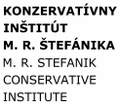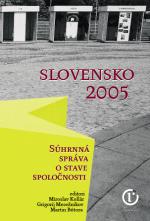
 The year 2005 was the first full year in which Slovak agriculture was subordinated to the Common Agricultural Policy (CAP) of the European Union (EU). The change showed up particularly in new legislative standards that regulate and limit the conditions for doing business on farmland, as well as in a dramatic change in the method of allocating public funds to agriculture, and a substantial increase in the volume of these funds.
The year 2005 was the first full year in which Slovak agriculture was subordinated to the Common Agricultural Policy (CAP) of the European Union (EU). The change showed up particularly in new legislative standards that regulate and limit the conditions for doing business on farmland, as well as in a dramatic change in the method of allocating public funds to agriculture, and a substantial increase in the volume of these funds.
A complex evaluation of the current condition of Slovakia’s agricultural sector and expectations regarding its future requires the analysis of a great number of important economic indicators related to the supply and demand of various commodities, as well as to the CAP, which actively influences market processes, the development of input prices and the cost structure of farms, and, finally, the soil and climatic characteristics of the farming season. For reasons of space, it is impossible to present and analyze detailed information on particular developments in the agrarian sector, which includes agriculture, food processing, hunting, forestry and fishing. All the necessary data can be found in the Report on Agriculture and Food-Processing in the Slovak Republic, which is annually published by the Research Institute of Economics of Agriculture and Food-Processing, and the Report on Forestry in the Slovak Republic. Both reports are annually approved by the cabinet and the parliament.
The principal goal of the present chapter is to provide a basic analysis of the current state of Slovakia’s agricultural sector and its future from the viewpoint of the most important factors
that affect it:
· The changing structure of farm costs and revenues and their effect on agriculture;
· The effects of subsidies on agriculture;
· The effects of market regulations (i.e. legislative changes) on agriculture;
· The impact of agrarian policy on public finances.
Since most statistics regarding prices and the structure of farm costs and revenues are processed in the course of the following year, our evaluation of basic trends in Slovakia’s agriculture is based mostly on statistical data from 2004.
Author is an analyst of agrarian and environmental policy for the Conservative Institute of M. R. ©tefánik.
This text corresponds the chapter of the book Slovakia 2005. A Global Report on the State of Society issued by the Institute for Public Affairs.
The full text is available here as an Adobe Acrobat PDF.
It is possible to purchase the publication published in English language here.